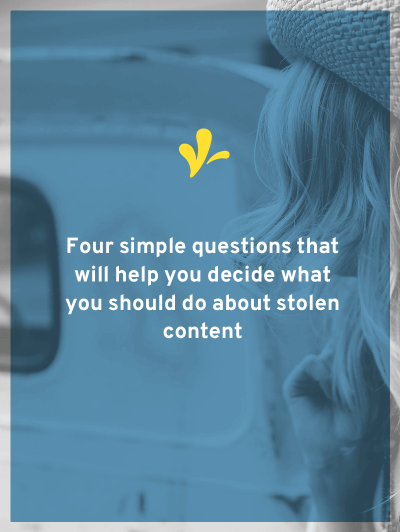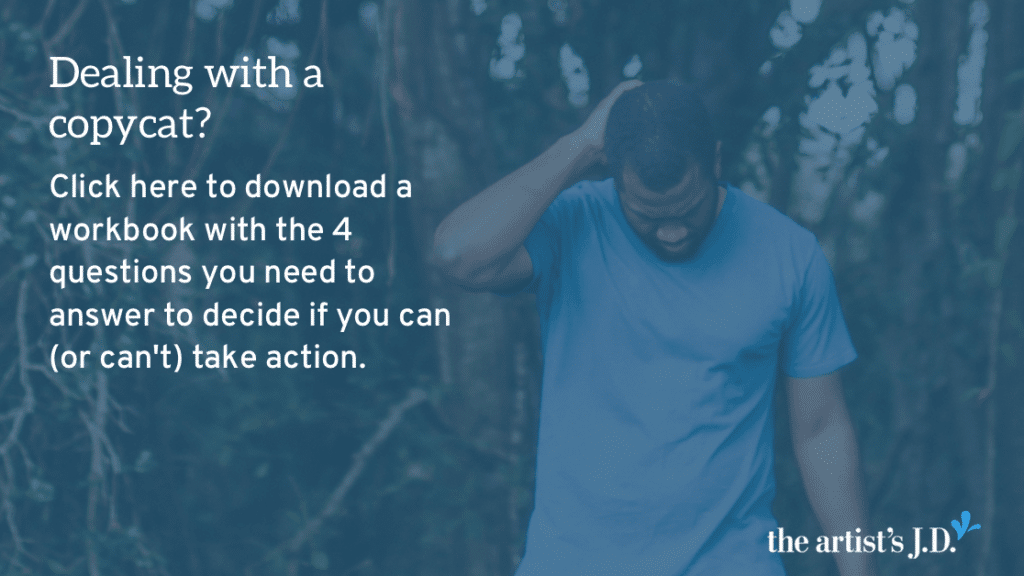Last time, I gave you an overview of when you can, can’t, and maybe shouldn’t act when you find your content used without your permission.
This time I want to give you the exact procedure that I use to make this decision.
And it’s all based on four simple questions that you only have to answer “yes” or “no” to.
Question 1: Did I give them the a-ok? And are they acting within it?
 The first question is pretty straightforward and just designed to weed out anything that you’ve pre-approved.
The first question is pretty straightforward and just designed to weed out anything that you’ve pre-approved.
Here it’s important to pull back out any agreements that you have. Maybe there’s a contract, licensing agreement or email exchange.
Get that out and start making notes about what restrictions you gave on your permission.
Were they only allowed to use it:
- for a specific time period?
- in a specific medium?
- in a specific geographic region?
- if they credited you?
You might be surprised at the things they are allowed to do that you didn’t know they were allowed to do.
If you gave them permission, you’ve fallen in the “can’t” bucket.
If you didn’t give permission or they are acting outside the bounds of that permission, move on to Question 2.
Question 2: Is this helping my business?
Yep, this is a lawyer telling you to be practical. This question isn’t centered in your legal rights, but in the realities of running a creative business. There are times that people sharing your content is the thing that it takes to move you from struggling to thriving.
So here you are just going to examine if this is helping your business.
If the answer is yes, you’ve fallen in the “shouldn’t” bucket.
If the answer is no, then move on to Question 3.
Question 3: Do I wanna tango with this person?
When I’m wearing my lawyer hat sometimes the other party or their attorney is a mean, spiteful, and/or angry person. They can be people I wouldn’t wish on my worst enemies.
So here again, I’m asking you a practical question. Is dealing with this person and situation worth the financial, emotional, and physical toll it will take on you?
If the answer is no, you’ve fallen in the “shouldn’t” bucket.
If the answer is yes, move onto Question 4.
Question 4: Is their use fair use?
I’ve said this a dozen times here and I’ll probably say it many times more. Fair use is tricky and hard. In fact it’s a good way to get a bunch of copyright lawyers to disagree. You can give the same situation to three of them and probably get three different answers.
Hop over here to work your way through the fair use analysis (or call your favorite lawyer and get them to do it).
If you decide that it is fair use, you’ve fallen in the “can’t” bucket.
If you decide that it isn’t fair use, you’ve fallen in the “can” bucket.
Pretty simple right?
These four questions will help you logically (and calmly) walk through the process, rather than acting in panic mode.


